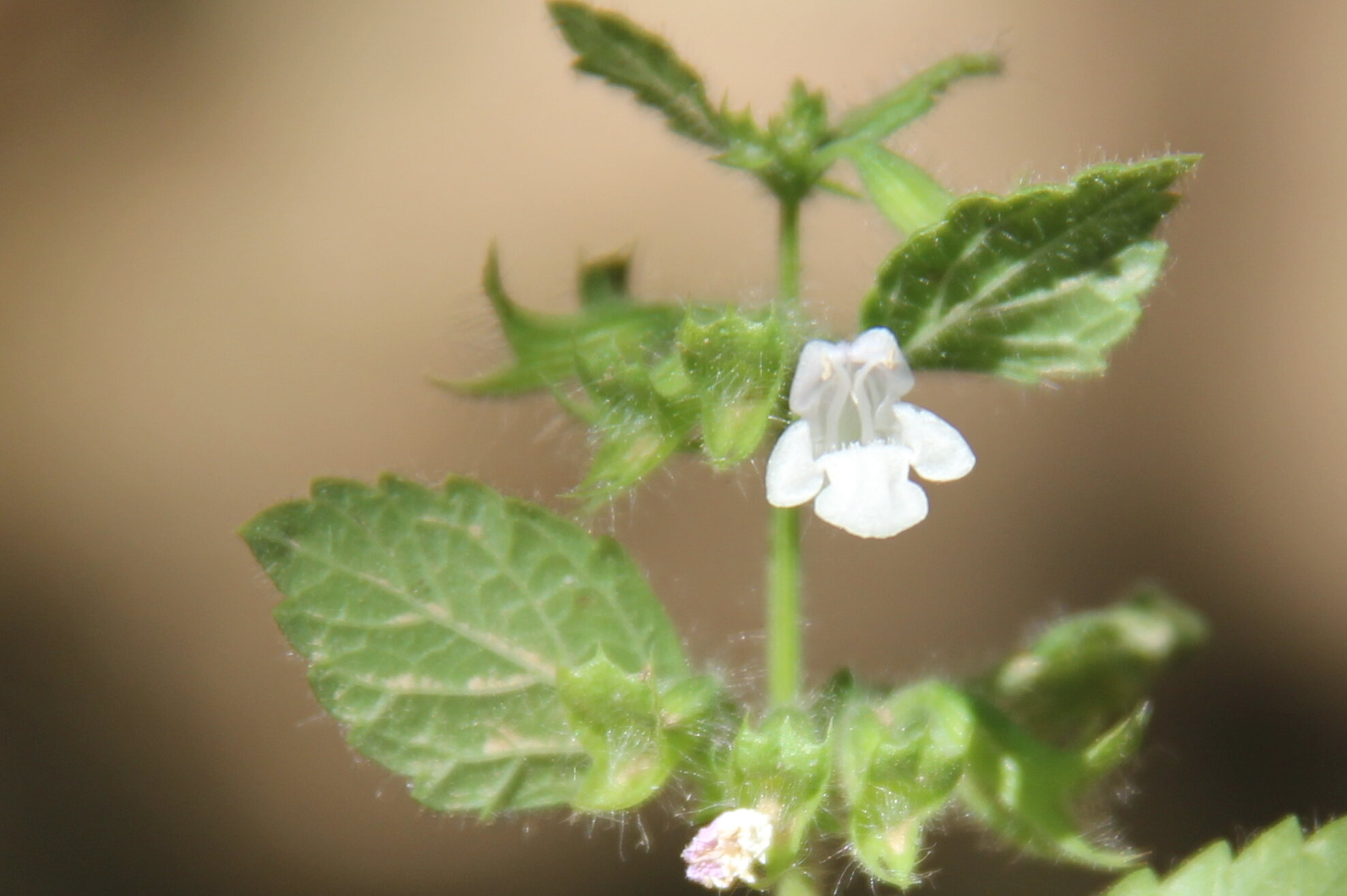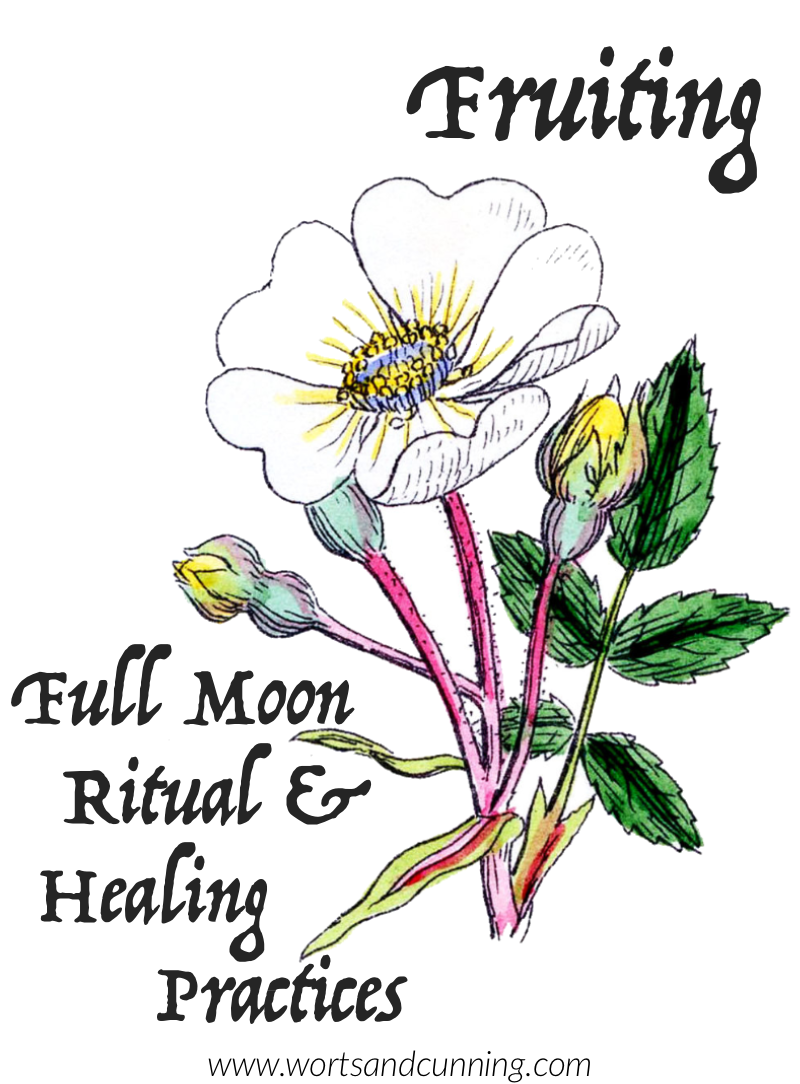Flowering: Waxing Quarter Moon Ritual & Healing Practices
As I write this I am sitting in my backyard, watching the white flowers of the Plum dance in the still cool breezes of early spring (and as I edit this today in the far too early heat, I am missing this moment). Our friend Plum, like all of the other trees in our yard, was planted here many years before we came to know this quiet piece of land in the valley of the Nisenan. The first tree to flower in our yard, Plum signals the start of the busier season of growing, early harvests of fresh greens, and the promise of wild winds and (hopefully!) rain that the later spring brings.
Flowers are waymarkers for those who work and live with the land - which is all of us for we are a landed species on an ocean planet. The flower has come to symbolize wisdom and holiness in many different cultures. The Rose, for example, with its multitude of petals, represents the many layers and paths of wisdom one can journey along through life and it is also a symbol of occult mysteries and secrets (think of the phrase sub rosa).
Flowers communicate through color and scent to all kinds of species to aid in their process of pollination and development of fruit and seed. Through philosophies such as the doctrine of signatures, flowers help us to understand the ritual and medicinal qualities of the plant. Our own humxn species, ever interested in layers of meaning and connection, has assigned nuanced meanings to flowers allowing them to become symbols of revolution and solidarity (such as the Red Rose of the Labour party) to Ojibwe floral myths and arts to conversations communicated by Victorians through the flower language, the meaning of devotional offerings such as through Japanese ikebana, and much more.
As the Moon grows to Fullness, the Waxing Quarter Moon marks a point of balance between what has been and what shall be. It is a time of flowering and the tender-petaled wisdom of opening up towards our power. Change, momentum, disentanglement, vitality, and harmonization are key energies of the Waxing Quarter Moon.
Herbal Traditions
In Traditional Western Herbalism (TWH), the Waxing Quarter Moon is considered a time of hot and dry herbs. Continuing on the sacred structure metaphor started in the last post in our Moon healing and ritual series, the Waxing Quarter Moon provides the heat and dryness needed to transform damp clay and dirt into the boundary walls of our space. The walls are still fragile, not yet cool and completely sturdy, but they begin to give shape to our desire of what we hope to bring into our sacred space. For my garden minded friends, in terms of the compost cycle, this is the height of heat needed for the breakdown of material and the production of soil.
While these are insights born of TWH, there's plenty of stories - personal and cultural - to explore about any phase of the Moon and I encourage you to seek and speak them out. When I think about plants of the Waxing Quarter Moon I'm drawn to flowering herbs that grow in abundance such as Dandelions (Taraxacum officinale) who live a vast life both above and below the ground, bringing that Quarter Moon balance into the mix (for an extra bit of magick use the leaves and flowers of Dandelion during the Waxing Quarter Moon and the roots during the Waning Quarter Moon). I'm drawn to plant allies that help me with discernment, helping me to step closer to my sense of power and self-worth, and away from the myths of lesser than and fractured-ness. Whenever you're seeking out plant allies for different phases of the Moon be sure to value your own intuition and creativity to guide you in relating to and with our plant friends.
Examples of Waxing Quarter Moon Herbs: Dandelion (Taraxacum officinale), Elder (Sambucus nigra), Elecampane (Inula helenium), Ginger (Zingiber officinalis), Juniper (Juniperus communis), Myrrh (Commiphora molmol), St. Joan’s Wort (Hypericum perforatum), Yerba Mansa (Anemopsis californica).
Elecampane (Inula helenium)
One of the reasons I like working with Elecampane and the Waxing Quarter Moon is because it is a fast-acting herb. Most herbs have a slower quality to them - you can feel their effect best over a longer period of time. Elecampane is a fast acting bronchodilator meaning that it opens up constricted bronchial tubes in our lungs helping us to breathe easier. In many ways the energy made possible at the Waxing Quarter Moon is like taking a deep and sudden in-breath after a period of effort. Energetically we move swiftly from the dark half of the lunar cycle to the bright half. As a plant ally, Elecampane can help us to bring swift moving energies into our life assisting us in transitioning from one place to another.
Elecampane has a number of healing qualities which reveal why it is classified as hot and dry in Traditional Western Herbalism including acting as an astringent (which "dries" or tones lax, damp, and stagnant conditions such as excess phlegm) and as a warming bitter that helps to wake up and stimulate a sluggish digestion. It's a hot plant without being too hot like, say, Ginger (Zingiber officinalis) is for some folks or too drying, which can make it more useful for a greater variety of folks.
A lot of the Waxing Quarter Moon magick that Elecampane holds lies in its ability to help us become more fully embodied after a period of dis/illusion, stagnation or struggling with being present to the here and now. Elecampane whispers, comforts, reassures, saying "Here, here, you are here, right in this moment. Time to take a deep breath in." Our ally Elecampane, which sits so comfortably between the worlds without losing the ability to be fully of the world, reminds us that we don't have to know exactly what we are hoping to become to be able to participate in the act of becoming. That's Waxing Quarter Moon magick - daring to move into a new space, a new awareness, and take a deep breath in when you arrive there.
I love Elecampane for breathwork and it's an essential part of my winter apothecary. If you want to learn more about Elecampane, check out my full plant profile.
Altar + Rituals
Decorate your altar with items that invoke a sense of balance, carefully stacked stones, a variety of colorful that harmonize with one another or more obvious symbols like scales. Before you begin any ritual, take in an even number of deep and sustaining breaths. Wear items of clothing and jewelry that represent who you are becoming. Fire and candle spells, breathwork, rituals of transformation, burning away burdens, delighting in self-discovery, and magick that makes you sweat. As an offering consider the ways that you participate in the everyday transformations of the world around you, from helping to create life-enhancing accommodations for the mental health of others, planting community gardens, and standing side-by-side with loved ones in their time of need. Learn about the sign that the Moon is in for more specific ideas and recommendations.
A Simple Waxing Quarter Moon Ritual
To help you move in the direction of a goal
The following ritual is to help you move in the direction of a goal of yours, guided by your bright wisdom, that will help you to exist more embodied and authentically in your life. For those of us coming into ourselves in ways that aren't supported in our immediate home, school, and/or work environment, this ritual can help us to focus on the inner resilience we need to know and love ourselves unconditionally in a world that doesn't always show us the love we deserve. Here is where the shadow work of the Waxing Quarter Moon comes into play - in seeking to uphold our self-worth we can encounter internal and external narratives which try to devalue us and tear us down. So we follow where love guides us, find the people that love us completely, and work our magick to protect our bright wisdom while also following it like a lantern in the dark.
If you have a tincture, tea or flower essence of Elecampane, you might choose to take a few drops or have a small cup as part of the ritual, helping you to open up and expand your breath to help move energy. Or you can use any other Waxing Quarter Moon herbs or an herbal ally you work with in the same way.
Begin by creating sacred space in whatever way is meaningful to you.
Place a single unlit candle before you on your altar. If you want, you can surround it with herbs, stones, and other objects that will help empower your intention for your goal. Consider what it is you're hoping to manifest. Connect with the ways that you are being guided towards this goal by your inner knowing, including intuitions and affirmations that this goal is right for you. Begin to raise energy around your goal, imagining what it would feel like and what your life would be like to have accomplished it. When you feel like you've raised enough energy around your intention, focus it into the candle before you.
Take a deep breath in and out. Light the candle and speak the following charm three times through:
What was, what is, what shall be
By the light of my wisdom
I flow bright, I flow free
Take a deep breath in, focusing on your goal. Breathe out, feeling the path towards your goal manifesting before you. Speak the charm three more times.
Take another deep breath in and out. Speak the charm a final three times.
Use your hands to wave the light of the candle towards you, bathing yourself in the light of the candle, feeling your inner glow draw itself from deep within yourself to all around you. This is the light which guides you towards your goal.
You can either let the candle burn out completely now or perform this ritual for three more consecutive nights, lighting the same candle each time. You can also spend time each day calling forth your inner brightness to guide you home again and again.
A Simple Waxing Quarter Moon Tarot Spread
To help you glow with the magick of change in your life
Card 1 · Desire
What is the change that I currently desire? This card helps us to understand what type of change we are seeking to bring into our life. A card to help us illuminate what it is we want to create in our life.
Card 2 · Fear
What is the change that I'm afraid of? Just as there is change we crave, there is also change we fear - sometimes these two currents are very similar. This card helps us to understand our fear so that we don't let it overshadow our desire.
Card 3 · Heat
What is currently shaping me? This card helps us to check-in with where we are currently at in our life and the forces that are shaping us, much like the heat of a forge shaping raw metal into something new.
Card 4 · Flame
What is the wisdom that guides me? This card helps us to recognize our inner wisdom glowing within us, helping to guide us towards our desire.
Card 5 · Story
The overall message of the Waxing Quarter Moon in your life. If you are familiar with your birth chart and how to find the transiting Moon this card can help you to understand the message of the Waxing Quarter Moon in the context of where it lands in your chart.
This was part two in a series exploring the Moon phases through ritual and healing work. You can find the first post on the Full Moon over here. These posts were inspired by my patrons who help me keep the majority of my work free to access.
If you’re looking for more Moon magick and ritual in your life I highly recommend learning more about your lunar return. Take a deeper dive in my starry-hearted course or find a moment of rest and restoration inspired by the Moon in your birth chart. If it’s the flowers that are calling you, here’s one of my favorite Rose-inspired brews.
This post was made possible through patron support.
❤︎ Thanks, friends. ❤︎





































